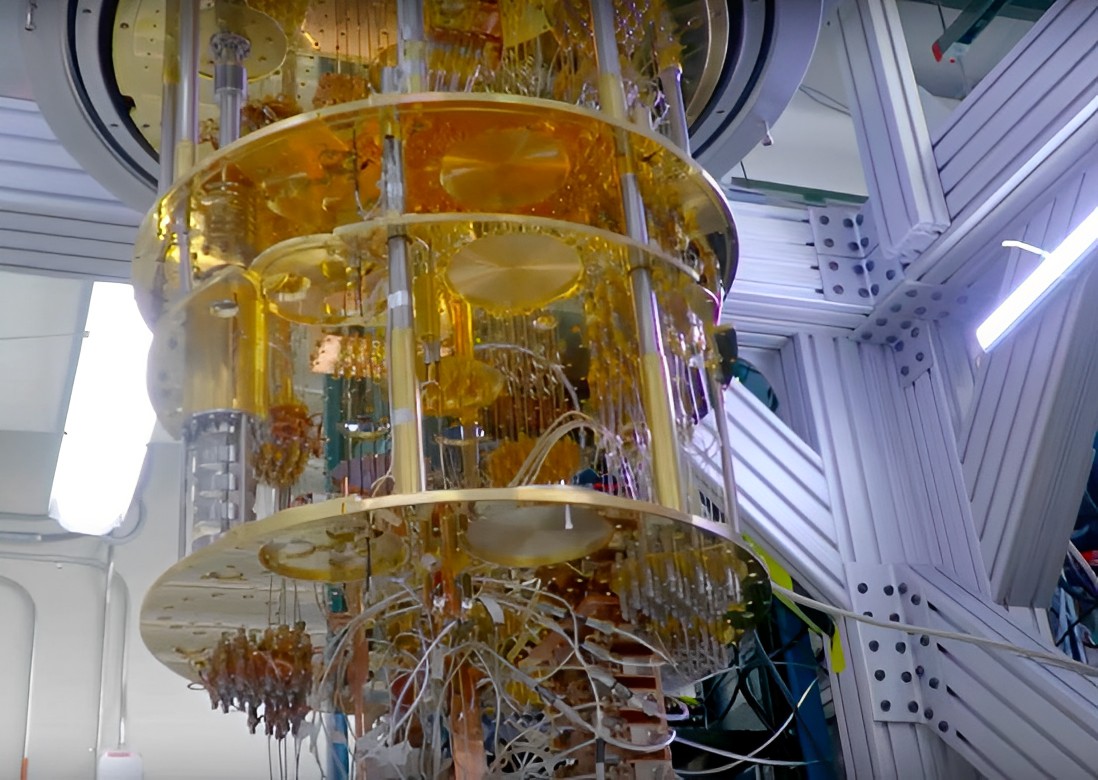创新背景
在20世纪50年代,除非能以同样的长度尺度制造物质,否则人类无法理解自然是如何运作的。
创新过程
在发表在《自然》杂志上的一篇论文中,研究人员描述了他们是如何能够模拟有机化合物聚乙炔的结构和能量状态的。聚乙炔是由碳原子和氢原子组成的重复链,由碳的单键和双键交替形成。
连锁反应
该研究依赖于通过故意设计的聚乙炔分子的10量子点复制品测量电流,因为每个新电子从设备的源出口传递到漏极-电路的另一端。为了更加确定,他们模拟了聚合物链的两条不同链。

模拟的碳原子是红色的,而蓝色描绘了它们之间交换的电子。
在第一个装置中,他们切断了链的一小段,在末端留下双键,产生10个电流峰值。在第二个装置中,他们切断了另一段链,在末端留下单键,只产生两个峰值电流。因此,由于链末端原子的键长不同,通过每条链的电流会有很大的不同。测量结果不仅与理论预测相符,而且完全吻合。
这表明,你处理器内可以模仿真实分子中实际发生的事情。这就是它令人兴奋的原因,因为这两条链的特征非常不同。大多数其他量子计算架构都没有能力以亚纳米的精度设计原子,也没有能力让原子距离那么近。
所以这意味着,现在科学家可以开始理解越来越复杂的分子,把原子放在适当的位置,就像它们模仿真实的物理系统一样。

西蒙斯教授表示,选择由10个原子组成的碳链并非偶然,因为它在经典计算机能够计算的大小限制内,该系统中有多达1024个独立的电子相互作用。如果将其增加到20点链,可能的相互作用数量将呈指数增长,这使得传统计算机难以解决。
研究人员现在可以制造比传统计算机更大的设备,进而可以研究以前没有模拟过的分子。
只需要更少的组件紧密地挤在一起,就能最大限度地减少对量子态的干扰,从而允许设备放大,制造更复杂、更强大的量子系统。
创新关键点
在新系统中,原子本身创造了量子位,在电路中需要更少的元素。在10点系统中,只需要6个金属栅极来控制电子——换句话说,栅极比有源器件组件还少。而大多数量子计算体系结构需要几乎两倍或更多的控制系统来移动量子比特体系结构中的电子。
创新价值
人们将能够以一种不同的方式理解世界,解决以前从未能够解决的基本问题。例如理解和模仿光合作用——植物如何利用光产生生长所需的化学能。或者了解如何优化用于化肥的催化剂的设计,目前这是一个高能量、高成本的过程。
因此,这对从根本上理解大自然是如何运作的有着巨大的意义。
Quantum processors built in silicon can simulate organic molecules with high accuracy
In a paper published in the journal Nature, the researchers describe how they were able to mimic the structure and energy state of the organic compound polyacetylene. Polyacetylene is a repeating chain of carbon and hydrogen atoms, formed by alternating single and double bonds of carbon.
A chain reaction
The study relies on measuring the current through 10-quantum-dot replicas of deliberately designed polyacetylene molecules, as each new electron passes from the source outlet of the device to the other end of the drain-circuit. To be sure, they modeled two different strands of a polymer chain.
In the first device, they cut a small section of the chain, leaving a double bond at the end and producing 10 spikes of current. In the second device, they cut another strand, leaving a single bond at the end and producing only two peak currents. Therefore, the current flowing through each chain will be quite different due to the different bond lengths of the atoms at the end of the chain. The measured results are not only consistent with the theoretical predictions, but also completely consistent.
This shows that you can mimic what's actually happening in real molecules inside your processor. That's why it's exciting, because the characteristics of the two chains are very different. Most other quantum computing architectures don't have the ability to design atoms with sub-nanometer precision, or to get atoms that close together.
So what this means is that now scientists can begin to understand more and more complex molecules, putting atoms in place as if they were mimicking real physical systems.
Prof Simons said the choice of a chain of 10 atoms was no accident, as it was within the size limit that a classical computer could calculate, with up to 1024 individual electron interactions in the system. If this is increased to a 20-point chain, the number of possible interactions grows exponentially, making it difficult for conventional computers to solve.
Researchers can now build devices much larger than traditional computers, allowing them to study molecules that have not been simulated before.
Only fewer components are needed to be tightly packed together to minimize interference with quantum states, allowing devices to scale up and make more complex and powerful quantum systems.
智能推荐
利用新方法创造特殊单原子催化剂
2022-08-16能源部SLAC国家加速器实验室和斯坦福大学的科学家的一项新研究:将单个铱原子锚定在催化剂表面将水分子分裂的效率大幅度提高。
涉及学科涉及领域研究方向从沸石反应中发现可将残余甲烷转化为甲醇的方式
2022-08-14从沸石自然反应中发现“笼效应”,仿生研究甲烷羟基化的机制。
涉及学科涉及领域研究方向化学合成非织造布抗菌纺织品
2022-06-29创新使用射频气体放电等离子体技术开发新技术,改善非织造布材料性能,增加其抗菌作用。
涉及学科涉及领域研究方向新能源 | 利用铁、碳和氢创新融合帮助氢燃料电池降低成本
2022-06-29利用已有廉价易得元素进行分离式单原子金属转化合成生产新型化学催化剂。
涉及学科涉及领域研究方向